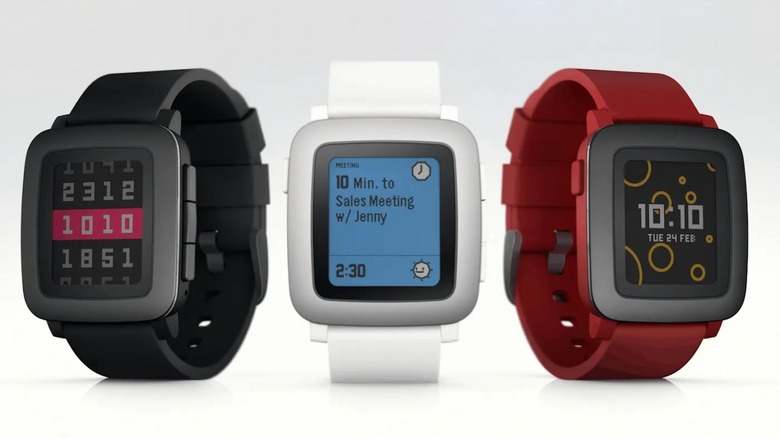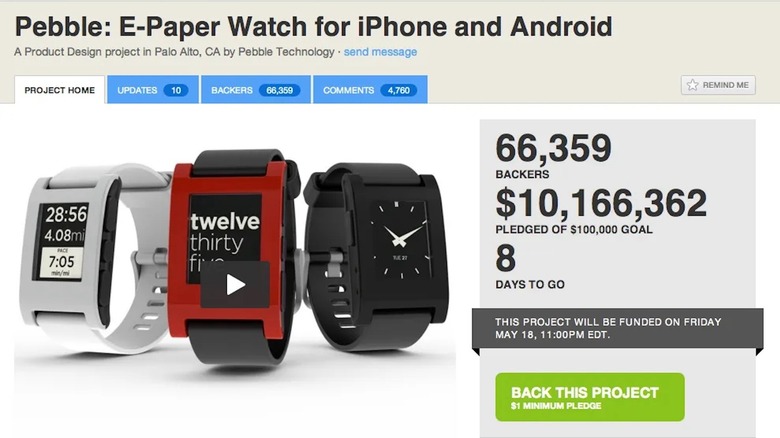Why Were Pebble Smartwatches Discontinued?
Smartwatches were a thing before the Pebble smartwatch made a (for the time) massive splash on Kickstarter. That said, it was still a heck of a splash, pulling in $10 million (100 times its original $100,000 goal) by campaign's end thanks to more than 65,000 backers.
And yet, Pebble isn't around anymore. Sure, you might see one of the watches on somebody's wrist every so often, and you can find them on the aftermarket in a variety of states for a variety of prices, but the company itself was dissolved in 2016. This is largely considered a shame by Pebble owners — many of whom claim to still use their Pebble watch to this very day.
It doesn't make sense, does it? A small company that has great success with a new (often beloved) product is arguably still the one to beat when it comes to e-paper smartwatch displays, and many people still use their devices close to a decade later. How could something that seemed to start out so well end up falling apart after only a few years?
What went wrong with Pebble smartwatches?
The reasons behind Pebble's eventual dissolution and subsequent acquisition by Fitbit are at once both simple and complicated. The company's founder, Eric Migicovsky, details the situation in both ways through a 2022 Medium blog — which he explains was originally written in 2017 but not posted until five years later.
Pebble's Kickstarter success failed to properly prepare everyone, or at least get them thinking about what should come next. Continuing to bank on that initial success resulted in a lack of cohesive marketing. A lengthy (four-month) lead time for unit production meant placing 2015 holiday supply orders before the retail release (so there was no solid data to build estimates of). Emphasis was placed on the efficiency of Pebble Time to set it apart from other 2015-era smartwatches, but it was a difficult concept to make stand out in the market, and customer interest just wasn't there. The resulting overestimation left over $15 million worth of stock sitting idle. The team was expanded, and the company moved to larger offices, essentially doubling operating costs without the sales growth to support the increase.
In short, Pebble, the company, tried to expand too aggressively, dropped the ball with marketing, and overestimated sales of the Pebble Time. Butting up against competition from much larger competitors in that same 2015-2016 time period, like the Apple Watch, didn't help either. Migicovsky goes on to explain that "The underlying problem was that we shifted from making something we knew people wanted, to making an ill-defined product that we hoped people wanted."

